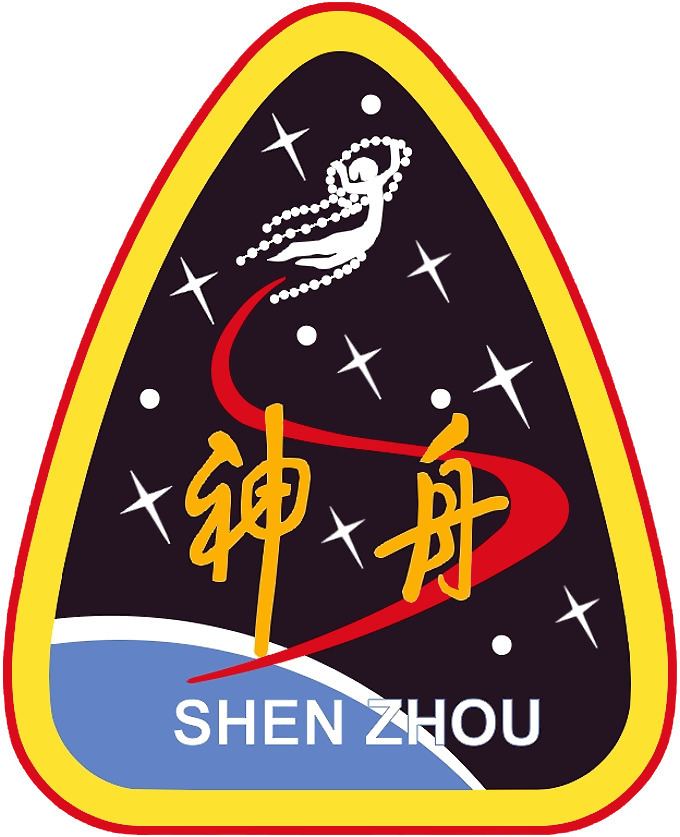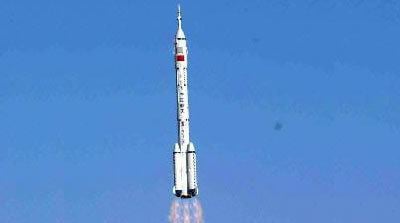COSPAR ID 2003-045A Orbits completed 14 Period 1.5 hours Date 15 October 2003 Landing date 15 October 2003 | SATCAT no. 28043 Apogee 336,000 m Launch date 15 October 2003 | |
 | ||
Mission duration 21 hours, 22 minutes, 45 seconds Launch mass 7,790 kilograms (17,170 lb) | ||
Shenzhou 5 manned space mission
Shenzhou 5 (simplified Chinese: 神舟五号; traditional Chinese: 神舟五號; pinyin: shénzhōu wǔ hào) — was the first human spaceflight mission of the Chinese space program, launched on 15 October 2003. The Shenzhou spacecraft was launched on a Long March 2F launch vehicle. There had been four previous flights of unmanned Shenzhou missions since 1999. China became the third country in the world to have independent human spaceflight capability after the Soviet Union (later, Russia) and the United States.
Contents

shenzhou 5 manned space mission
Mission parameters
Politics

The launch was widely heralded in the official Chinese state media with newspapers devoting far more space to the launch than any recent event. While the Chinese media portrayed the launch as a triumph for Chinese science and technology and a milestone for Chinese nationalism, it has also been pointed out in both Chinese and Western media that Yang Liwei showed the flag of the United Nations in addition to the flag of the People's Republic of China. The state media also reported that crop seeds from Taiwan were brought aboard the spacecraft.

General Secretary and President Hu Jintao, in an official celebration at the Great Hall of the People, hailed China's success in launching its first manned spacecraft into orbit, describing it as "an honor for our great motherland, an indicator for the initial victory of the country's first manned space flight and for an historic step taken by the Chinese people in their endeavor to surmount the peak of the world's science and technology."

Hu added, "the Party and the people will never forget those who have set up this outstanding merit in the space industry for the motherland, the people and the nation." He also expressed congratulations and respect to specialists and people who have contributed to China's space mission development on behalf of the CPC Central Committee, the State Council and the Central Military Commission (CMC).
The launch was met with praise from around the world. For example, Prime Minister Junichiro Koizumi of Japan called the launch "a great feat". United States President George W. Bush congratulated Chinese President Hu and wished China continued success. U.S. State Department spokesman said that the United States wished to "applaud China's success in becoming only the third country to launch people into space". NASA Administrator Sean O'Keefe called Shenzhou 5 an "important achievement in human exploration" and wished China "a continued safe human space flight program."
The spacecraft has since featured prominently in festivities and celebrations not only in China but also in foreign countries, such as official North Korean commemorative stamps showing the first Chinese manned spacecraft alongside the DPRK's first satellite Kwangmyŏngsŏng-1.
